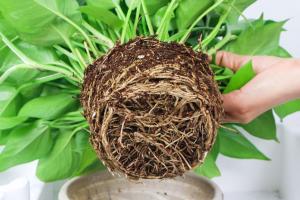How to Prune Grafted Tomato Plants
Grafted tomato plants are becoming increasingly popular for their improved resistance to diseases and pests, as well as their vigorous growth and high yields. However, to ensure the best possible harvest, it is important to know how to properly prune grafted tomato plants. This guide will provide you with step-by-step instructions on how to do so.
Step 1: Identify the Suckers
The first step in pruning grafted tomato plants is identifying the suckers. Suckers are new shoots that grow between the stem and a branch or a leaf. While these shoots may seem harmless, they can actually drain energy and nutrients from the main stem, resulting in a smaller harvest.
Step 2: Remove the Suckers
Once you have identified the suckers, it is important to remove them. However, it is essential to do so carefully to avoid damaging the plant. To remove the suckers, use a sharp, clean pair of pruning shears and cut them as close to the main stem as possible. Be sure not to tear the stem or leave a stub, as both can lead to disease and infection.
Step 3: Prune the Lower Leaves
It is also important to prune the lower leaves on grafted tomato plants. This is because the lower leaves are often the first to become infected with disease, and removing them can help prevent the spread of infection to the rest of the plant. Additionally, removing the lower leaves can help improve air circulation and sunlight exposure, which can lead to a healthier plant.
Step 4: Remove Dead or Diseased Leaves
Another important aspect of pruning grafted tomato plants is removing dead or diseased leaves. These leaves can be a breeding ground for disease and pests, and can ultimately harm the plant. To remove dead or diseased leaves, use pruning shears or scissors and cut as close to the stem as possible. Be sure to disinfect your pruning tools between cuts to prevent the spread of disease.
Step 5: Prune for Shape and Size
Finally, grafted tomato plants can also be pruned for shape and size. While this is not necessary for a successful harvest, it can help improve the aesthetic appeal of the plant and make it easier to manage. To prune for shape and size, simply use your pruning shears to trim back any branches or leaves that are growing in an undesirable direction or that are too long.
In conclusion, pruning grafted tomato plants is an essential part of maintaining a healthy and productive crop. By following these simple steps, you can help your plants grow stronger and produce a larger harvest. Remember to always use clean and sharp pruning tools, and to disinfect them between cuts to prevent the spread of disease.

 how many times do yo...
how many times do yo... how many planted tre...
how many planted tre... how many pine trees ...
how many pine trees ... how many pecan trees...
how many pecan trees... how many plants comp...
how many plants comp... how many plants can ...
how many plants can ... how many plants and ...
how many plants and ... how many pepper plan...
how many pepper plan...































